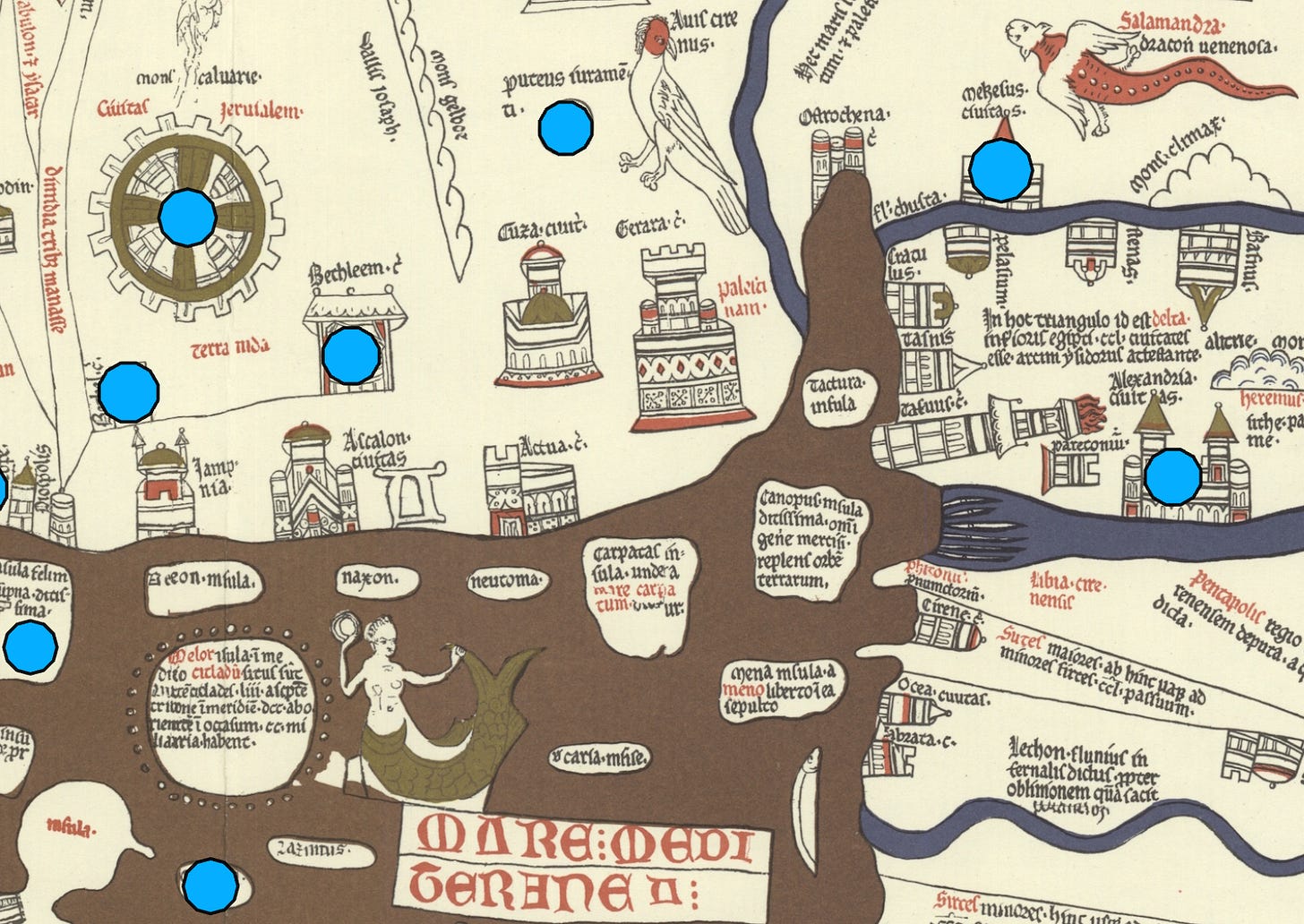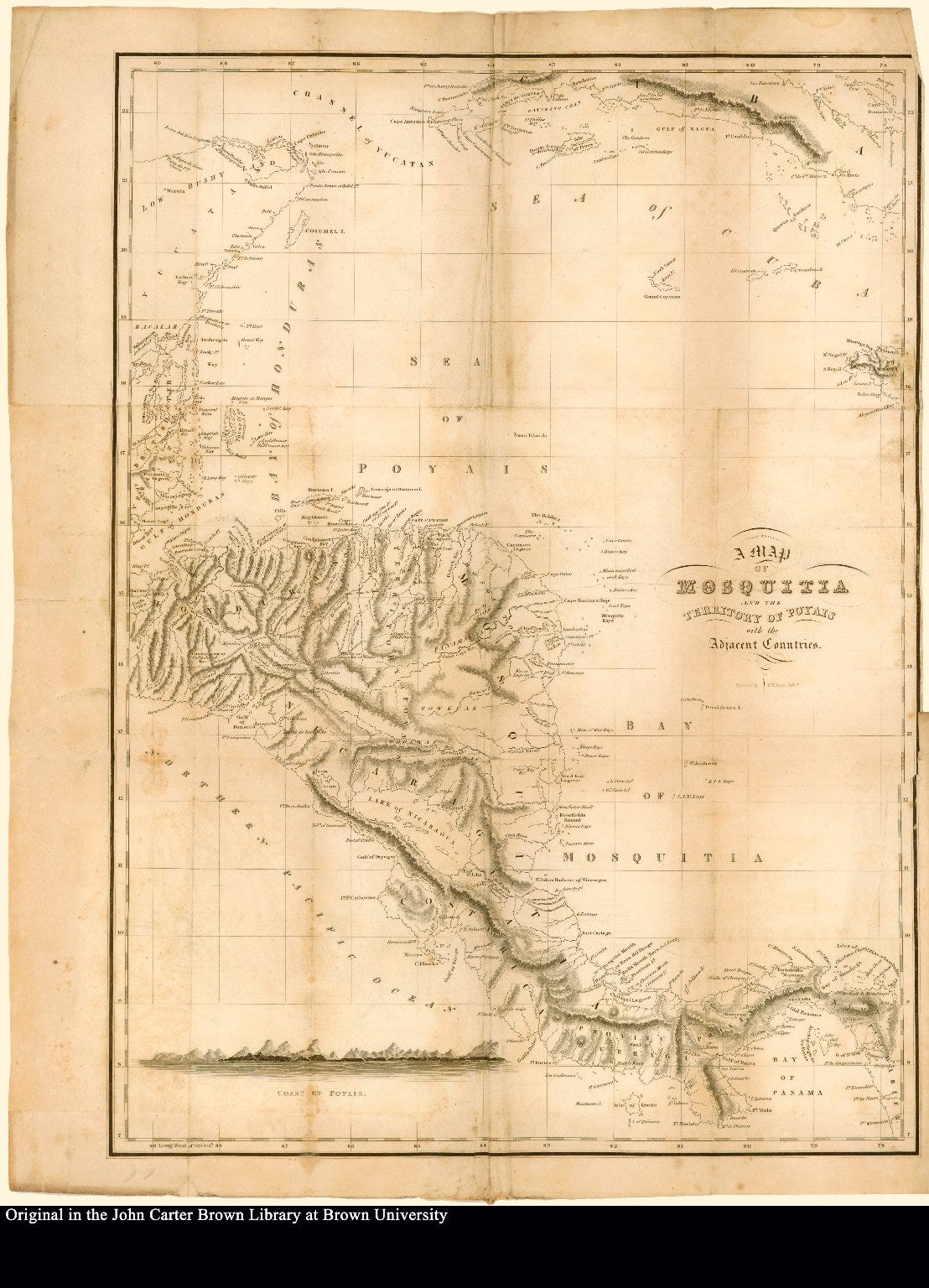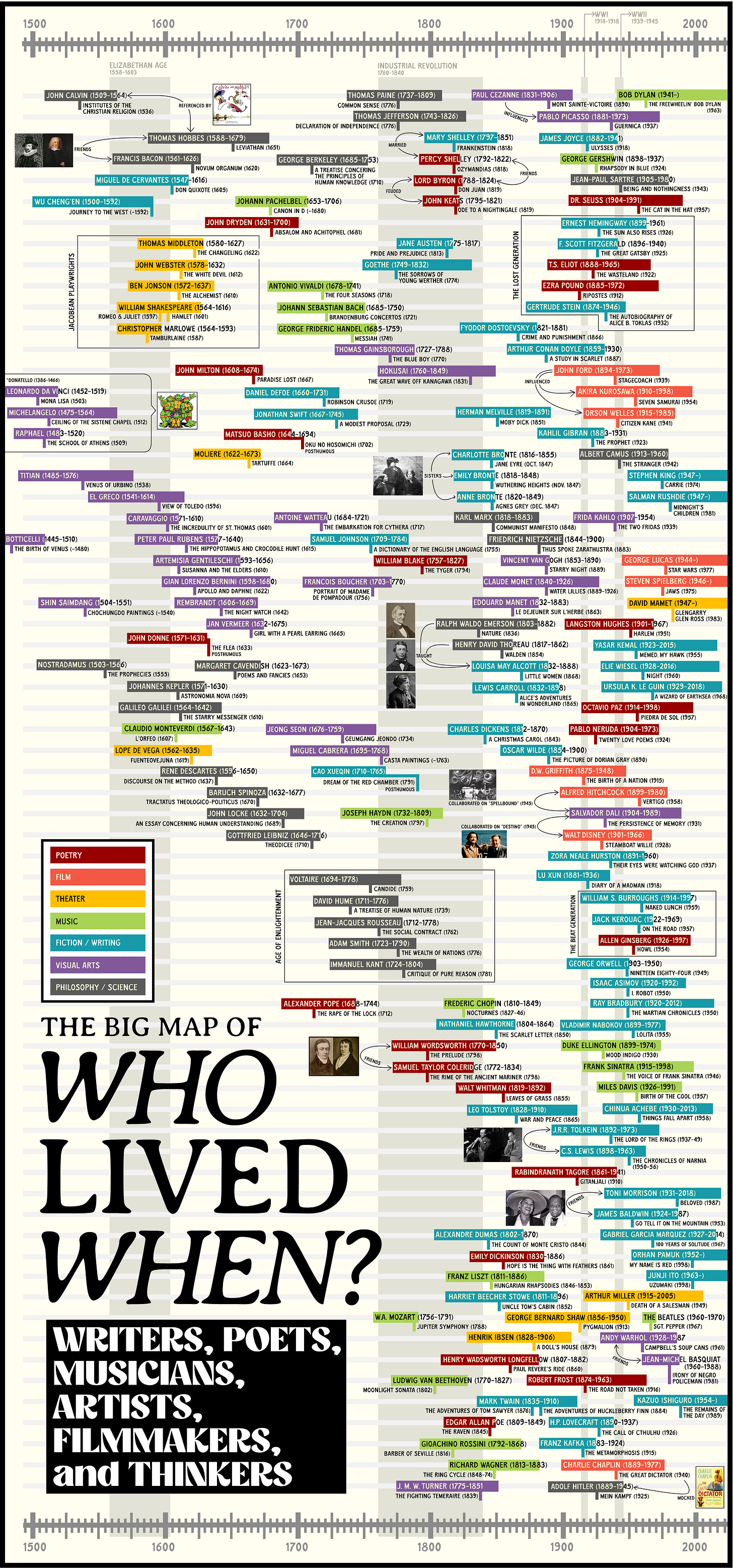I hope you’ve all been enjoying Künstlerroman so far! I’m back with a new type of post this week: Object Lessons! This is where I take a real historical object (or more than one) and help you all see how we can use it to build a fictional narrative. Then at the end, I’ll give you an object and let you analyze in the comments. So let’s crack into it.
Strange Medieval Maps

This was actually something I learned from Weird Medieval Guys, but maps weren’t really used for navigation during the Medieval Era, hence why they don’t contain paths on them. They were kept in the home for study—if you were wealthy—and were more about the idea of a place and religious symbolism than they were about getting to that place.
So this map above, a detail of the gorgeous Hereford Mappa Mundi, includes alongside very real places (Bethlehem, Mecca, the Mediterranean…) mermaids, and some kind of salamander with wings and a dog’s head. While it’s a myth that maps regularly had “here be dragons” in unknown areas, these other creatures did show up to fill the space. Despite their presence, they weren’t always believed in—but sometimes they were!
Clearly, this could be useful to a historical fantasy writer. Based on this map, your character could be journeying from Alexandria to Mecca to Bethlehem and get trapped by mermaid and/or conned into playing eternal catch with a salamander with a dog’s head on the way. (Very Odysseus coded.) There could be giant birds, or even just the threat of them in dropped feathers as long as a human’s height. Maybe they collect the feathers to build a Michelangelo-style flying contraption.
For a straight historical fiction—no fantastical elements—the animals can go unremarked upon, or even viewed with derision by a character who is too smart to believe in them. Instead, maybe your character is traveling to Jerusalem and is annoyed that the cities are farther apart than they appeared on the map in their parents’ study growing up. They could be on the water and pass what they think is the Towel of Babel aflame (at least, I think that’s what I’m seeing near Alexandria on this map), but it turns out to be a lighthouse. Or, the drawings of buildings here can help you decide how to describe them.
This is what I love about maps—they’re inherently generative and offer so many possibilities. Not just of routes, but whole worlds to explore.
Not An Artifact, Still A Map
Even though it’s not a historical artifact, I want to include one of r/profound_whatever’s Big Maps of Who Lived When, which is a great way to find out who your historical fiction characters might have been aware of, listening to, reading, competing with, or hating. This is the writers, artists, and religion edition—there’s also a royalty and historical figures edition. (This image is, fittingly, huge, so I recommend opening it in a new tab or going to r/profound_whatever’s original post.)
I wanted to include this map because I think it’s easy to accidentally silo people into the city or country where they existed, but as we can see from this map, Franz Liszt the composer and Harriet Beecher Stowe the author were alive at the same time. Liszt never toured America, even during the height of Lisztomania, but interestingly, HBS made 3 trips to Europe between 1853 and 1859. While we have no proof (that I know of) that she made a trip to Weimar and attended one of the concerts or festivals Liszt put on as part of his job as Kappellmeister Extraordinaire in the court of Grand Duchess Maria Pavlovna, nor do we know whether he attended one of her speaking engagements about Uncle Tom’s Cabin.* But it could have happened, and that’s what makes historical fiction fun to write. Maybe they did meet and have coffee together, who knows?
Your Turn

If this map looks a little familiar to you, it should—it’s Central America. Sort of.
The real historical context is wild, but not really necessary at this point.** Suffice to say that the Territory of Poyais, which you can see in the center of this map, doesn’t exist.
How would you use this map to help yourself write a fictional story? Drop your ideas in the comments.



